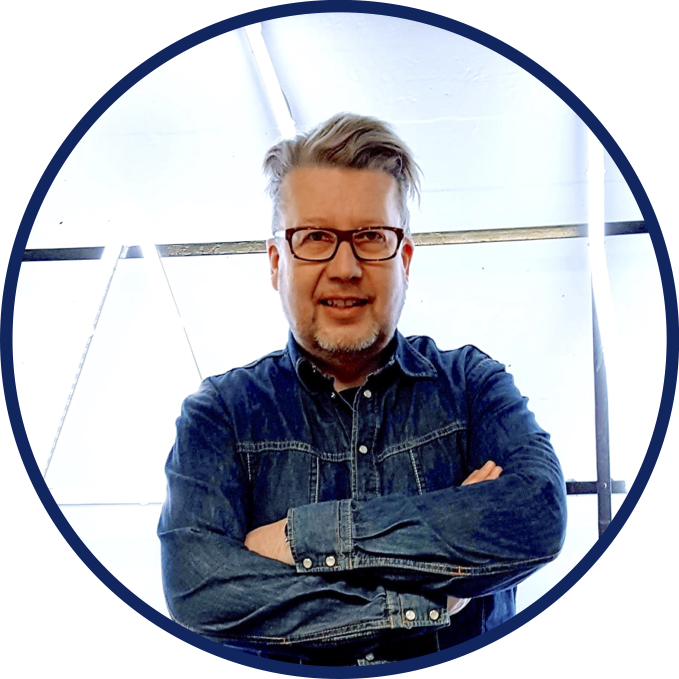How Design Superpower will save our Planet
“Recycle and reuse” has become an increasingly common way of life for private consumers, but also for industrial enterprises. Still, many manufacturers continue to adhere to a creed of cost-effective – read: commercially rewarding - production. But what can companies and we as individuals do to produce less CO2, and what does that really mean for the environment? We asked our expert and Strategic & Circular Design Consultant Tapani Jokinen from the Environmental and Reliability Engineering department about his vision for a new designed world.
Let’s start with a simple question: How are our environmental habits hurting our world?
Tapani: We are living in a world that faces many ecological challenges, and they in turn create new risks for our economy. Our concerns about global warming, pollution, and sustainability are finally being acknowledged, with the EU introducing new policies. In 2020, it won’t be enough for companies to simply acknowledge environmental concerns. Consumers today expect to see real commitment in the form of action. New legislation will create more mo-mentum for change. The European Commission’s Green New Deal and the ‘right to repair’ rules under the Ecodesign Directive will fundamentally change the way we de-sign and manufacture products. New products have to be made easier to repair and maintain from the start and spare parts have to be widely available. Manufacturers are being encouraged to design products with the circular economy in mind.
EU has set itself the goal of becoming the world’s first climate-neutral continent by 2050, and the Finnish government goal is to become the world's first carbon-neutral welfare society by 2035. However, with resource consumption set to double by 2050, we need to drastically rethink our entire economic model if we are to meet the 1.5°C climate target. And time is running out.
»We have lived on loan, and now it is time to pay it back with interest.«
(Tapani)
»In nature there is no such thing as waste. In nature nothing is wasted; everything is recycled.«
(David Suzuki)
You often use these quote to push product designers and big brands to re-think their creative design processes. What could the design process of tomor-row look like?
Tapani: There are too many unnecessary products in this world. Everything is de-signed, but very few things are designed well. I believe we are misusing our creativity. Designers are used to produce more waste – not solve the problems of how to reduce waste. Great design should solve problems, not create them. We will have to up our game; we will need to understand what a circular economy is and realize that, as designers, we will play a crucial role in achieving this transition. 80% of environmental pollution and 90% of manufacturing costs are the result of decisions taken at the product design stage, so circular design is key to accelerating our transition to a circu-lar economy.
In a circular economy, design is key for a sustainable future. But what does this mean for…?
Tapani: It means that the circular economy requires a totally new set of skills and tools for us to move from designing linear to designing circular systems. Ecodesign is all about designing products that give us maximum utility with minimum environmen-tal impact. It's better for your business and better for nature. In an article of June 2012, McKinsey & Company described the benefits of circular design: ´It has the po-tential to cut up to 50% of product costs. Correctly implemented, it means that prod-ucts are cheaper to manufacture, since they require fewer materials and less energy. It also means that products are more attractive to customers´. For the EU, the circular economy is the key to a future-proof European economy.
You make it sound a real possibility, so why doesn’t big industry do so yet?
Tapani: For companies, sustainability means huge disruptions. Our current way of thinking, doing business, and making products will not work anymore. A lot of com-panies are uncertain about how the circular economy can create value for them. They need to know how to apply circular design in practice, subscribe to a vision of a sus-tainable future, and understand their future opportunities. We want to help organizations set up and fulfil their circular economy strategy and make them more resilient for the coming changes. Design is a team sport: Circular design requires a very holistic, collaborative, and multi-disciplinary approach that cuts across organizational silos to achieve real circularity. We must work faster and harder to improve sustainability to fight against climate change and advance the circular economy.
Last question: How can people start on their journey towards designing a sus-tainable future and where can they find experts like you?
Tapani: One good option is to join our Ecodesign Learning Factory at Fraunhofer IZM in March, where you can get in touch with us and other people interested in circular design. Our Ecodesign Learning Factory is a training program that is all about develop-ing sustainable products and services. Our practical approach focuses on advancing circular economy opportunities by emphasizing design thinking and lifecycle thinking. The user-centric ecodesign tools and methods we teach will help you minimize your products’ environmental impact while maximizing the benefits for all stakeholders.
(Author: Tapani Jokinen)
Last modified:
 Fraunhofer Institute for Reliability and Microintegration IZM
Fraunhofer Institute for Reliability and Microintegration IZM